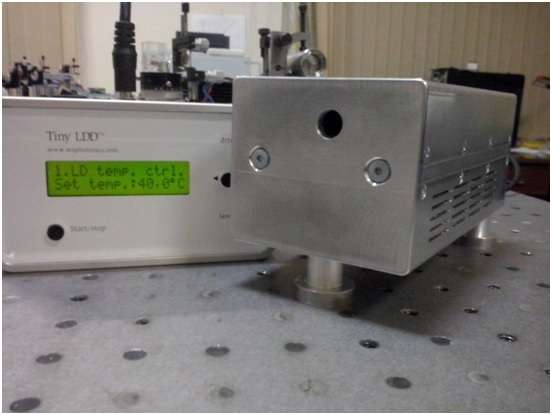Eye-safe laser developed from single crystal growth
A team of scientists at Lomonosov Moscow State University and the Belarusian National Technical University has created a unique laser. It's a compact light source with wavelengths harmless to the human eye. The device can be used in medicine, communications systems and also in research. The works are published in Journal of Crystal Growth and Optics Letters.
'In collaboration with our colleagues of the Center for Optical Materials and Technologies, Belarusian National Technical University, we have developed a highly efficient, diode-pumped, eye-safe laser, which can be used in ophthalmology, communication systems and ranging,' says co-author Nikolay Leonyuk. The development of this laser followed the team's development of laboratory growth technology for single crystals with desired properties.
The emission with wavelengths of 1500 to 1600nm is safe for the eyes and offers practical applications in medicine, ranging systems, communication systems and optical location.
The light-refracting system of the eye, consisting of the cornea and crystalline lens, has a sufficiently high absorption coefficient in this part of the spectrum, so only a small fraction of the energy reaches the sensitive retina. And the radiation in the 1500 to 1600nm spectral range suffers low losses passing through the atmosphere, making the device advantageous for applications in telecoms.

An experimental set-up of the laser operating on a (Er,Yb):GdAl3(BO3)4 crystal. Credit: Source: Nikolay Leonyuk
To date, among the sources of radiation in this spectral range, the most widely used are the solid-state lasers based on phosphate glasses co-doped with Er (erbium), and Yb (ytterbium) ions. Such lasers are also relatively simple, compact and capable of operating in adjusted Q-mode required for producing short impulses.
In the meantime, the main disadvantage restricting the usage of erbium phosphate glasses in continuous diode systems is the low thermal conductivity of the matrix. To avoid this limitation, Er and Yb containing a crystalline matrix can be used.
In the published research, GdAl3 (BO3)4 single crystals co-doped with Er and Yb were used to improve the efficiency of generation pulse energy and repetition rate, and hence to increase the maximal measurement range, reducing errors and time.
These single crystals are characterised by a record value of thermal conductivity and high thermochemical stability (decomposition at temperatures of 1280°C, resistant to corrosive environments) as well as mechanical strength.
'The solid-state laser based on yttrium gadolinium borate crystals is a unique compact source of emission with varying eye-safe wavelengths,' says Nikolay Leonyuk. 'Reliable laser design, along with high performance, makes applicable in laser ranging systems, metrology and laser-induced breakdown spectroscopy.'
The use of laser diodes as a pump source increases the lifetime of the laser up to 100,000 hours. The laser system is easy to use, does not require water cooling, and does not generate any vibration during operations.
Compared with the widely used CW erbium fiber lasers, the (Er,Yb):GdAl3 (BO3)4-based laser is characterised by linear laser radiation and lower price.





